Universities in The United States

Abilene Christian University

Academy of Art University

Adams State College

Alabama A&M University

Alabama State University

Alaska Pacific University

Albertus Magnus College

Alliant International University

American InterContinental University Los Angeles

Antioch University Midwest
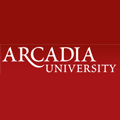
Arcadia University

Arizona State University, American English and Culture Program

Ashland University
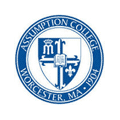
Assumption College

Atlantic International University

Auburn University at Montgomery
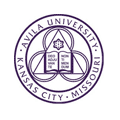
Avila University

Azusa Pacific University
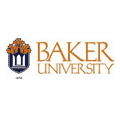
Baker University

Baltimore City Community College
Bay State College
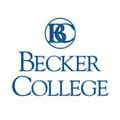
Becker College

Bellevue College
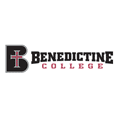
Benedictine College

Bentley University
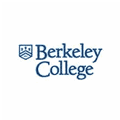
Berkeley College

Binghamton University

Bismarck State College

Black Hills State University

Black Hills State University

Boston Architectural College

Boston University

Boston University Summer Term

Brandeis International Business School

Brown University

Bryn Mawr College
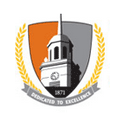
Buffalo State College
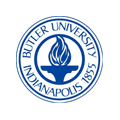
Butler University

California Institute of Technology

California Institute of the Arts

Carnegie Mellon University
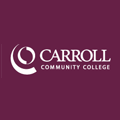
Carroll Community College

Carson-Newman College

Central Community College
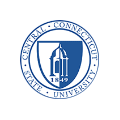
Central Connecticut State University

Chaminade University of Honolulu

Chemeketa Community College

Chicago-Kent College of Law, LL.M. in International and Comparative Law

Christian Brothers University

Citrus College

City University of Seattle

Claremont McKenna College

Clark College

Coleman University

College for Creative Studies

College of Mount St. Joseph
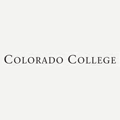
Colorado College

Colorado School of Mines

Colorado State University

Columbia University

Concordia University Wisconsin

Coppin State University

Cornell University

Creighton University

Dartmouth College

Des Moines Area Community College

DeSales University

DeVry University

Dowling College

Drew University

Drexel University

Duke University

East Carolina University
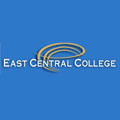
East Central College

Eastern Connecticut State University

Eastern New Mexico University

Eastern University

Emmanuel College

Fairfield University

Ferris State University
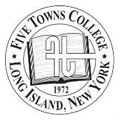
Five Towns College

Florida Atlantic University

Florida International University
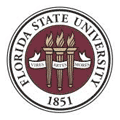
Florida State University

Fordham University
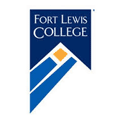
Fort Lewis College

Georgetown University

Georgia Institute of Technology

Global College, Long Island University

Golden State Uiversity

Grand Canyon University

Green Mountain College
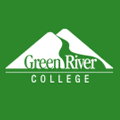
Green River Community College/International Programs
Grove City College

Harrisburg University of Science and Technology

Hartnell College

Harvard University

Hawaii Pacific University

Higher Education Consortium For Urban Affairs (HECUA)

Highline Community College
Universities in The United States by City:
AbileneAdaAlamosaAlbanyAlbuquerqueAlexandriaAnchorageAndersonAnkenyAnn ArborAnnapolisAppletonAshlandAtchisonAthertonAtlantaAuburnAustinAzusaBaldwin CityBaltimoreBangorBellevueBerkeleyBig RapidsBillingsBinghamtonBirminghamBismarckBoca RatonBostonBoulderBrattleboroBridgeportBrooklynBrookvilleBryn MawrBuffaloCambridgeCedar CityCedar RapidsCenter ValleyChampaignChapel HillChicagoCincinnatiClaremontClevelandColchesterCollege ParkColorado SpringsColumbusCookevilleCortlandCorvallisDallasDaphneDavenportDavisDaytonDaytona BeachDecaturDeLandDelawareDentonDenverDes MoinesDetroitDowners GroveDurangoDurhamEphraimErieEugeneFairfieldFarmingtonFarmvilleFlowoodFort CollinsFredericksburgGainesvilleGermantownGlendoraGlensideGrand Island Grand JunctionGreat FallsGreeleyGreenvilleGrove CityGunnisonHammondHanoverHarrisburgHempsteadHollandHonoluluHuntingtonHuntsvilleIllinoisIncline Village IndianapolisIrvineIthacaJacksonJacksonvilleJefferson CityKaneoheKansas CityKerrvilleLa JollaLargoLexingtonLoch SheldrakeLong BeachLos AngelesLubbockMadisonMars HillMartinMedfordMemphisMequonMiamiMiddleburyMinneapolisMontclairMontereyMontgomeryMoragaMoreheadMorgantownMoscowMurfreesboroNashvilleNevadaNew BritainNew BrunswickNew HavenNew JerseyNew LondonNew OrleansNew YorkNewburghNorfolkNormalOakdaleOld WestburyOmahaOronoOxfordPasadenaPembrokePhiladelphiaPhoenixPittsburghPocatelloPortalesPortlandPoultneyPrincetonProvidenceRapid CityRensselaerRiver FallsRiversideRomeovilleRoscommonSalemSalinasSan AntonioSan DiegoSan FranciscoSanta AnaSanta BarbaraSanta ClaraSaranac LakeSavannahScrantonSeattleSelinsgroveShawneeSheboyganSnyderSpearfishSpokaneSt. DavidsSt. LouisSt. PaulSt. PetersburgStanfordStorrsTacomaTalladegaTallahasseeTampaTempeToledoTowsonTroyTucsonTuscaloosaUnionUnityUniversity ParkUrbanaUticaValdostaValenciaVancouverVincennesWalthamWashingtonWashington, D.C.WatervilleWaverlyWellesleyWest HartfordWest HavenWest LafayetteWest Palm BeachWestminsterWestonWilliamsburgWilliamsportWillimanticWillistonWilmingtonWinchendonWinfieldWoosterWorcesterYellow SpringsYoung HarrisAbout universities in The United States
The higher or post-secondary education system in the United States is one of the best on the globe, and many of the country’s universities consistently rank among the world’s best in terms of quality and the accomplishments of their graduates. The system is comprised of several different types of educational entities, including community colleges; state colleges and universities; and private institutions of higher learning, including colleges, universities and specialized schools, offering programs in a wide range of academic, professional and vocational disciplines.
Higher Education in the United States
Community/Junior CollegesCommunity colleges in the United States, also known as junior colleges or city colleges, can be found in each of the country’s fifty states, with the exact number typically depending on the size of the population. Most of these schools are located in the states’ larger cities, where demand for quality post-secondary education is highest.
Community colleges are unique in that they offer a variety of both academic courses and vocational programs, leading to Associate degrees and diplomas/certificates, respectively.
Academic Programs Offered at Community Colleges
For many students, the cost of a four year university can be difficult to manage, especially right out of high school. As a result, a large majority of students are now opting to enroll in a community college near their home, where they can complete the initial two years of their studies—known as the general education requirements—at a much more affordable rate. At a junior college, students can take a number of Bachelor degree prerequisite courses, in subjects such as Mathematics, English, Health Science, Social Science and Physical Education, and transfer the credits they earn for those courses to the four-year institution of their choice following graduation. After completing all of these courses, which generally takes two to three years depending on course availability, students will earn an Associate of Arts degree—a degree unique to North America that can ultimately help students who would otherwise be ineligible to enroll in a four-year college or university gain admission.
Vocational Programs Offered at Community Colleges
For students who do not wish to pursue an academic or degree-based education, but rather a vocational diploma or certificate, community colleges offer a relatively affordable way to accomplish those goals. Depending on the community college, students can enroll in any number of two-year vocational, professional or technical programs, ranging from automobile mechanics to early childhood education to hotel and hospitality services. Upon completion of their specific program, students will earn a diploma or certificate of completion, which will enable them to seek entry-level employment in the career field in which they earned those credentials.
Public Universities and Colleges
Compared to private universities and colleges, the public universities and state colleges in the United States offer a relatively affordable way for students to earn their undergraduate or graduate degree, provided they are residents of the state in which the institution is located (out-of-state tuition is significantly higher). Public colleges and universities offer a variety of academic programs leading to Bachelor and Master’s Degrees, and while a select few state colleges also offer doctorate or PhD programs, the majority of these advanced programs are typically reserved for universities. The reason for this is that most of the research centers in the United States, where faculty and graduate students work cooperatively to research solutions for problems in a number of different fields, are located at the country’s public and private universities.
States colleges in the United States are usually funded by each individual state while universities, which are much more heavily funded due to the aforementioned research centers, are usually funded by the federal government. State colleges have a set fee schedule in which students pay in advance for each quarter or semester of their education. Fees at the public universities, on the other hand, can vary from one school to the next, with students also paying in advance for each quarter or semester.
For full-time students, Bachelor degree programs in the United States’ colleges and universities ideally span 4 academic years. However, with the high demand for education, about half of all students will typically need to extend their education by a semester or year due to limited course availability. Master’s degrees programs generally take two additional years to complete, although the more advanced programs, such as engineering, may take an additional year.
Most public universities (and a very small percentage of state colleges) also offer advanced specialty programs that can span anywhere from 3 years (law) to seven years (medicine) after the Bachelor degree. Other programs that fit this category include pharmacy education, veterinary medicine, dentistry, and optometry.
Private Universities, Colleges and other Institutions
While the United States’ public universities and colleges offer a quality education that is comparable to most of the country’s private institutions, there are a select number of private schools that consistently outrank their public counterparts. These colleges and universities, which include Yale, Harvard, Stanford and Rice University, among others, have a reputation around the world for the rigid education they provide, and are thus very selective in their admissions process. As a rule, these and other private colleges and universities are very expensive to attend, with tuition fees that can sometimes be 10 to 20 times higher than that of a public school. Like the public and private universities and colleges, private institutions also offer a variety of programs that lead to Bachelor, Master’s, Doctorate, and Specialty degrees, such as Doctor of Medicine (M.D.)
In addition to the hundreds of private colleges and universities scattered throughout the United States, there are also scores of private specialty institutions, offering programs in only a select number of professional, vocational and technical fields, such as electronics, computer technology, and engineering.

